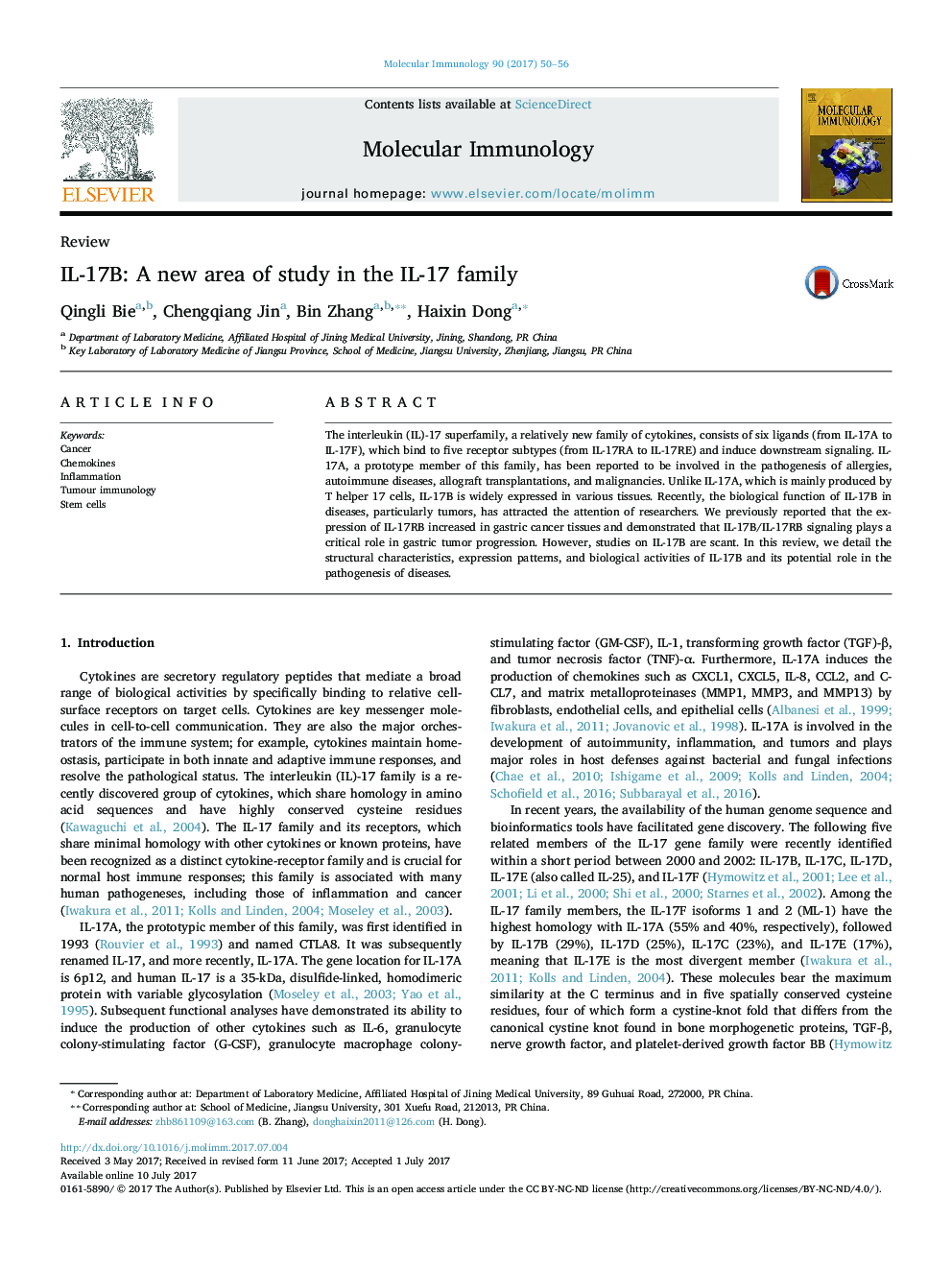| Article ID | Journal | Published Year | Pages | File Type |
|---|---|---|---|---|
| 5591873 | Molecular Immunology | 2017 | 7 Pages |
â¢IL-17B involves in several physiological and pathological processes including embryonic development, tissue regeneration, inflammation and autoimmune diseases and tumors.â¢IL-17B signaling was implicated in the progression of bone fracture healing and liver regeneration.â¢IL-17B plays crucial roles in the pathogenesis of inflammatory arthritis, community-acquired pneumonia, systemic lupus erythematosus and rheumatoid arthritis.â¢IL-17RB/IL-17B signaling promoted breast tumorigenicity by activating NF-kB, pancreatic tumor metastasis via the ERK1/2 pathway and promoted the growth and migration of gastric cancer cells and enhances cell stemness by activating the AKT/β-catenin pathway.
The interleukin (IL)-17 superfamily, a relatively new family of cytokines, consists of six ligands (from IL-17A to IL-17F), which bind to five receptor subtypes (from IL-17RA to IL-17RE) and induce downstream signaling. IL-17A, a prototype member of this family, has been reported to be involved in the pathogenesis of allergies, autoimmune diseases, allograft transplantations, and malignancies. Unlike IL-17A, which is mainly produced by T helper 17 cells, IL-17B is widely expressed in various tissues. Recently, the biological function of IL-17B in diseases, particularly tumors, has attracted the attention of researchers. We previously reported that the expression of IL-17RB increased in gastric cancer tissues and demonstrated that IL-17B/IL-17RB signaling plays a critical role in gastric tumor progression. However, studies on IL-17B are scant. In this review, we detail the structural characteristics, expression patterns, and biological activities of IL-17B and its potential role in the pathogenesis of diseases.
